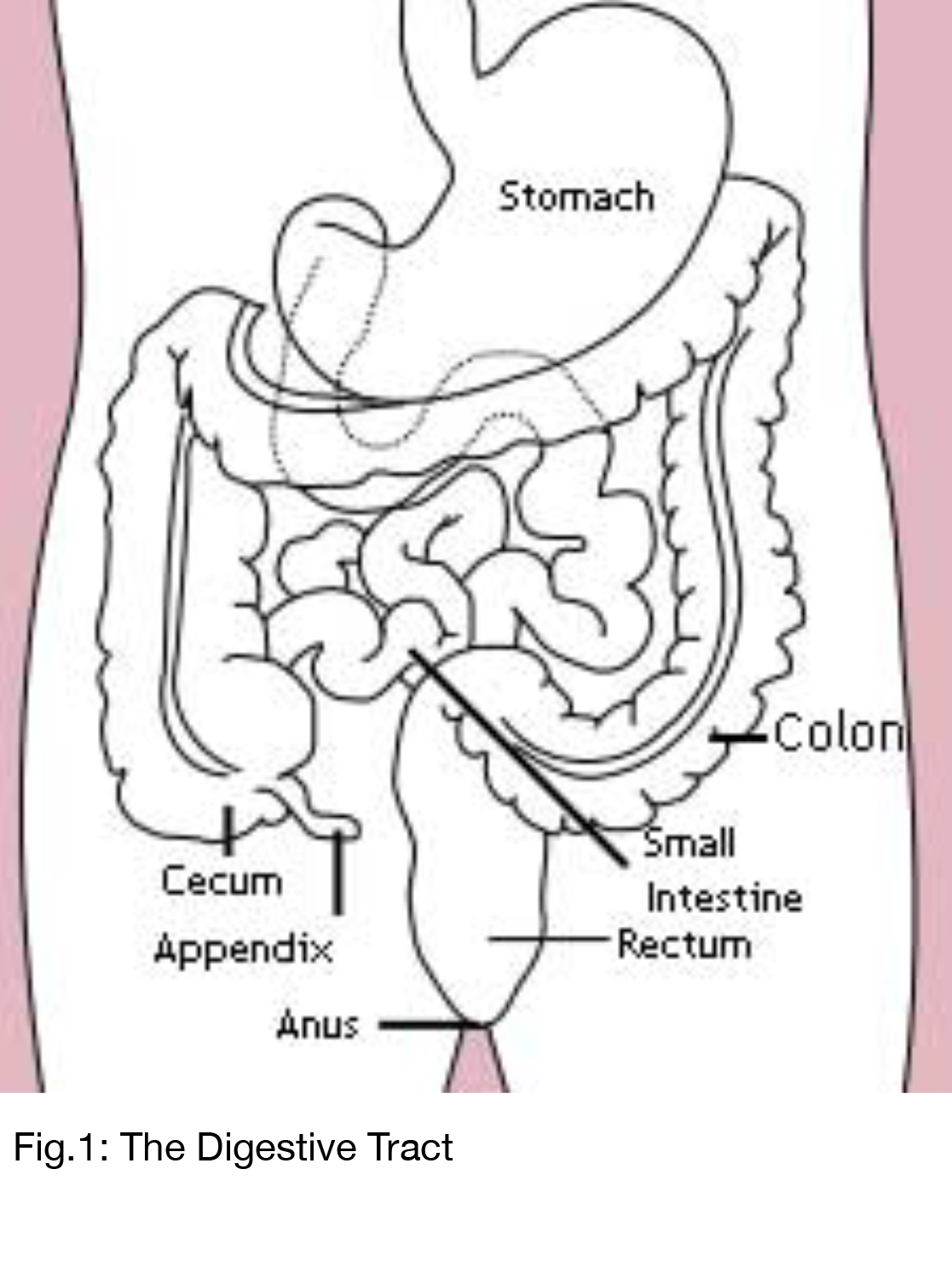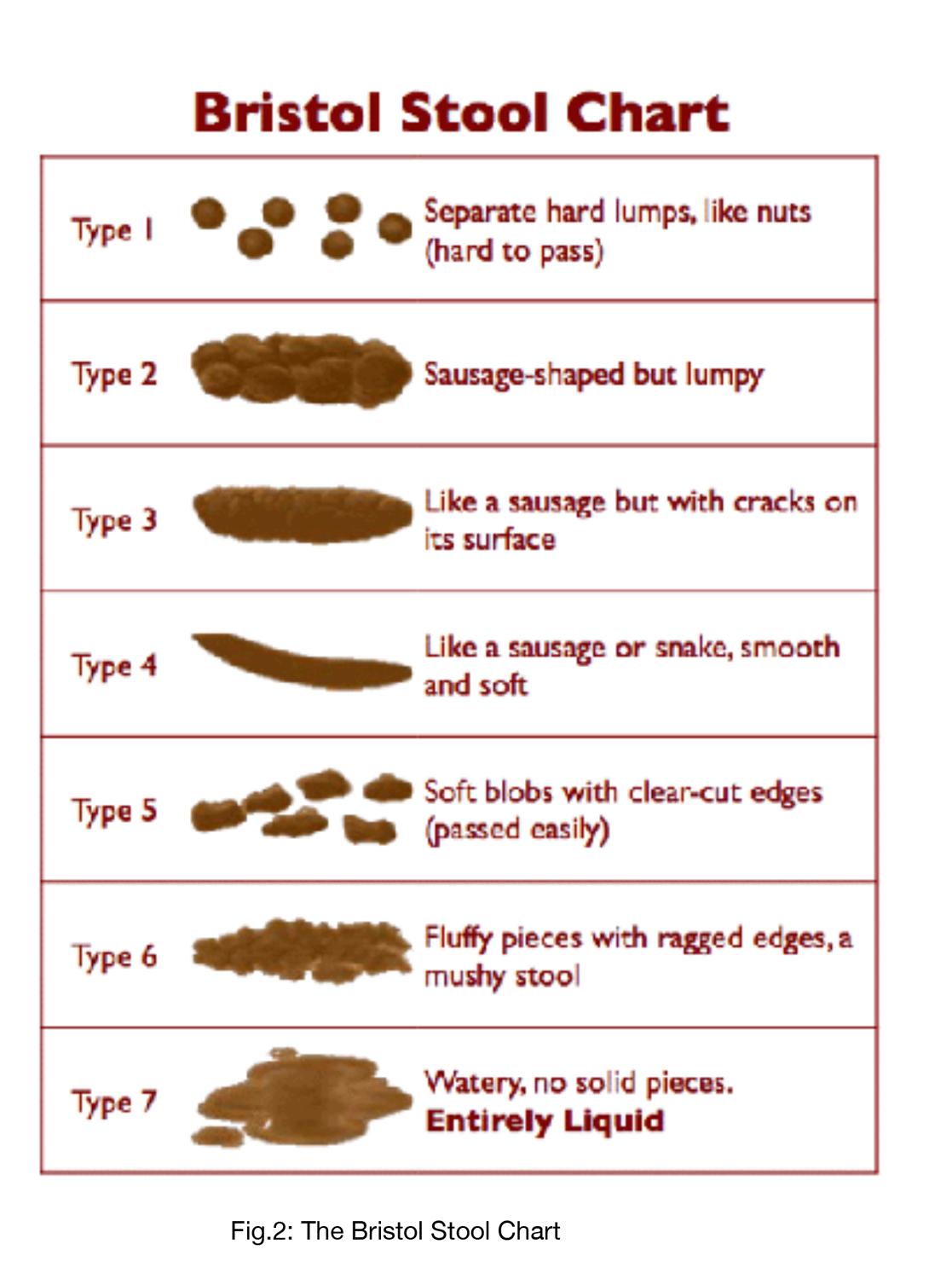Posted April 17, 2019
1
0
1
The amount of time that I spend each day with my patients talking about the gory details of their poo makes me marvel over the fact that we are all not just unique in our physical appearances and personalities, but our poo pattern is distinctive as well.
It is understandable that some people feel embarrassed or shy talking about it, after all certain aspects of life rather remain personal. The puzzling fact is that although we all poo, the understanding of what is normal is yet not clearly known.
Poo, a.k.a stool/faeces/bowel movement, is the last stop in the movement of food through our digestive tract [Fig.1]

The Bristol stool scale, a diagnostic tool to help evaluate human faeces was first published in 1997 by Dr. Ken Henton at the University of Bristol.

Stools are perceived to be mainly made of what you have eaten, but the wonderful fact is that our stools are three quarters water, a third is bacteria, another third is made up of indigestible food and fibre, whereas the remaining third is various substances that the body needs to be rid of like remanent of medications etc.
So, what is the normal stool?
Lets have a look at some of the characteristics of stool that would help you to understand what is normal and when you should be seeking help.
-
Consistency: Ideally, type 3-4 [Fig.2]; sausage-like smooth and soft stool is produced by a healthy digestive system and is considered more of a normal consistency.
- Colour: Stool colour ranges from brown to yellowish brown. However, this can vary depending on the type of food, medication etc. Don’t get alarmed if your stool seems black or a different shade of red on the odd occasion after having beetroot or iron supplements. However, if the colour is persistently green/ black/red/grey, speak with your doctor as this can be a sign of an underlying problem.
- Blood/Mucus: Whether it is red specs of blood or black (congealed blood), do not ignore this. Whilst red specs could just be due to haemorrhoids, it is very important to see your GP.
-
Undigested food: Every now and again, spotting bits of undigested food is the norm. However, if you can guess your previous night’s meal from your poo, this suggests that your food is not digesting well and this could be due to various reasons. Speak with your GP for an assessment.
-
Frequency: It would be great if everyone could open bowels just once every morning. But the irony is that some of us open bowels 2 times a day and others 2 times a week so there is no such thing as a normal frequency. It is important to check for the characteristics mentioned above and make sure there is no sudden change in your bowel frequency.
I am now sure you will be able to understand the all important poo a bit better. So, if you do notice any of the above mentioned red flags, do not feel embarrassed from seeking advice from your GP. Your dietitian can help you identify any dietary triggers that may impact your bowel pattern and offer support as necessary.
In my world, everyone’s a pony and they all eat rainbows and poop butterflies ! – Dr.Seuss





